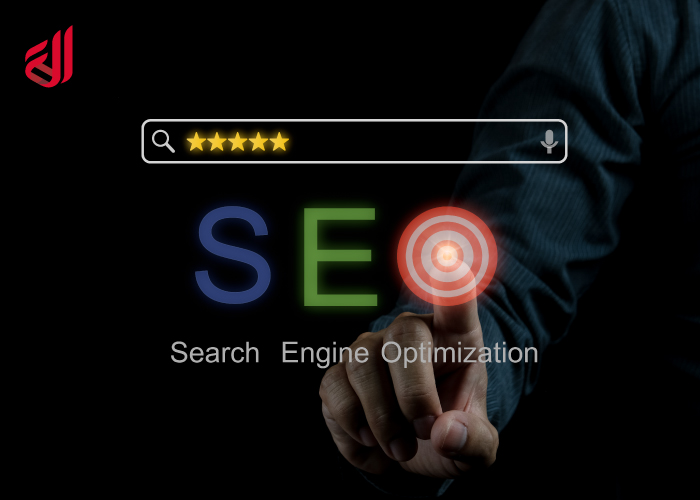Marketers can’t afford to ignore search engine optimization (SEO). To increase traffic from individuals using search results (such as Google) to locate your item or service, you should optimize your websites, especially blog entries. But does the information in your blog truly improve your company’s natural search engine rankings?
All of your questions, including this one, will be answered in this post. Prepare for a deep dive into blog SEO, the elements that influence it, and how to get started optimizing your blog website for the search results.
It’s obvious that blog material helps your SEO, but posting the appropriate sort of blog material might be difficult when you don’t understand where to start, especially in light of Google’s frequent algorithm modifications. When determining how to rank blogs, certain criteria are timeless whereas others have fallen out of favour.
This section will go over a number of the most important aspects that may have an impact on blog SEO, both immediately and over the long run.
Spend time learning about how every one of these elements performs, but don’t attempt to adopt them completely at once without first mastering them. Everyone should be employed in a certain way to achieve a certain search engine optimization aim for your weblog.
Blog Search Engine Optimization Aspects:
Here is the detail of the SEO aspect –
- Staying power:
Dwell time is a major part of the user experience, and as we all know, the user experience reigns supreme when it comes to search engine optimization, even if it is just an indirect search ranking for Google. A visitor’s “dwell time” refers to how long they stayed on a certain post inside your blog.
Exposure duration measures how long a customer spends on your website after clicking on it from a search engine result page. Search engines like Google may infer the quality of your writing from this statistic. Logic dictates that the more time a visitor spends on a page, more the likely it is to have some interest in it.
It’s subjective, which is why this measure is only used as a proxy for SEO success. No matter how well you plan your content, search engines won’t be able to deduce its intent. Your blog’s emphasis may be on bite-sized chunks of information that readers can consume in under two minutes.
For the optimal user experience, which means fewer hours spent on the site, you should provide important information near the top of each blog entry. Dwell time is a factor in search engine optimization, but you shouldn’t modify your content only to impact this statistic if it doesn’t match into your overall plan.
- Download Time:
Although the aesthetic components of your blog were indicated to have an impact on page load times, it is not the only factor. A blog’s load time may also be impacted by extraneous code and excessive plugin use. Increasing page performance may be as simple as eliminating unnecessary code.
Use HTML-Cleaner when you’re unsure of where or how to look for unwanted code. It’s a simple tool that doesn’t call for any coding expertise to operate. Just press a button, and the tool will highlight the redundant code and allow you to delete it.
Additionally, it is highly suggested that you take stock of your blog’s plugins. It’s important to sort out the plugins that are essential to your post’s day-to-day operations from the ones that were added as a quick fix. Website performance may be negatively impacted by plugins that work on the front side, and you can likely delete more of those extensions than you realise to speed up your site.
- Web Design for Mobile Devices:
Within the United States, smartphones represent more than half of all Google searches. For you, that pattern may be reflected in your weblog. There’s no getting past the reality that mobile optimization is a component that will affect your blog’s search engine rankings. But what, precisely, does it entail to make a website mobile-friendly? In this field, simplicity is regarded as the gold standard.
The majority of today’s pre-made website designs are generally mobile-friendly; all you’ll have to do is adjust the call-to-action buttons and text size as necessary. Then, periodically check your Google Analytics panel and do a mobile site performance test to see how your website is faring on mobile devices.
- Indicator Released On:
Many search results strive to provide just the most useful and up-to-date results. The date a web search indexes material is one criterion used to determine how up-to-current and pertinent it is. When a search engine discovers new material, it “indexes” it. If a user does a subsequent search using terms relevant to the indexed site, the page will be downloaded and presented in the SERP.
Implementing a plan for optimizing past performance may improve this SEO element. This tactic is ideal for well-established sites that have been around for a while and have accumulated a substantial volume of material.
You may improve your blog’s search engine optimization (SEO) without adding a significant amount of new material if you go back over and update some of your previous pieces with fresh insights and statistics.
- New Statistics:
The inclusion of recent data is yet another indirect scoring component of SEO. Recent statistics provide site users with up-to-date information that is both useful and reliable. By pointing your viewers in the direction of a reputable website that regularly updates its information, you’re signaling to search engines that you find this information to be useful and relevant to them (that is a bonus for that other website).
By including this information, you are letting search engines know that it is relevant to the material you post. Your viewers will grow to love the material over time, as seen by rising engagement indicators like time on the website and falling bounce level.
Search Engine Optimization Strategies for Blogs –
It’s important to know who you’re writing for when you start a blog.
When you wish your blog to be successful, it’s important to know who you’re writing for and how to talk to them, regardless of the topic area. Your blog approach will benefit from knowing who you’re writing for and what actions you hope they’ll do after reading your post.
Creating buyer personas is an efficient strategy for reaching your intended audience based on their demographic trends, psychographic segmentation, and purchasing habits. Without such knowledge, you risk creating grammatically sound and factually correct material that no one will want to read since it doesn’t resonate with them on a human level.
Explore potential search terms:
After deciding on your intended audience and developing a customer profile, you must now discover what information your visitors are seeking. A search engine might be a hard process to take on if you fail to approach with a plan.
So, first, decide what you want your blog to be about, and then decide whether you want to cover a wider or narrower range of subjects.
Supplemental images:
Images for specific keywords are highly valued by search engines including Google. Visual features, especially animations and images, are increasingly included in SERPs. If you would like your blog article to be included in an image bunch or clip snippet, you’ll need to come up with engaging visuals, source your images and video, and provide meaningful alternative text for every visual component in your article.
When it comes to ranking on the search engine results page (SERP), the alt text for your picture or video is crucial. Screen reader compatibility relies on descriptive alt text for images to ensure that readers who are visually impaired enjoy your blog’s information.
Create a compelling title:
As the very first thing a reader encounters, your weblog post’s headline is crucial in determining whether or not they will continue your piece. To stimulate the reader’s attention, a good title will either utilize informational language, pose a question, or introduce the topic with a sense of mystery.
A memorable title combines unusual and popular nouns with strong verbs and descriptive phrases. Using these kinds of terms in your blog’s headline in the appropriate ratios can entice and retain your audience.
Concentrate on the sensations the reader will have:
A blog post’s customer experience is paramount, as any good writer or SEO would attest. Legibility, page layout, and load time are all aspects of the visitor experience. To achieve this goal, your writing has to be crystal clear, all-encompassing of your subject, and up-to-date with relevant information and trends.
Additionally, utilizing headers and subsections to organize the text is crucial as it allows the user to scan the stuff faster and locate the data they want. Last but not least, anything included on a website, such as photographs and videos, might slow it down.
Page Titles & Body:
You should sprinkle your keyword all through the headings and core of your content at a natural rate. That involves incorporating your keywords into the text but doing so in a manner that doesn’t seem forced or distract the reader. Don’t go crazy, otherwise, you’ll have your site punished for targeted keywords.
When you sit down to write a new blog article, one of the first things you’ll do is consider how you might work in your keywords. It’s a good plan, but it should not consume all of your attention.
Instead of worrying about how many repetitions you can insert a keyword or keyword expression into your content, concentrate on what is most important to your readers. Give your whole attention to being supportive and addressing any query the client may have had that led them to your article. If you do that, you’ll be optimizing your site for relevant keywords without even trying.
Summary:
Search engine optimization, or SEO, is how major search engines like Google decide which websites are the best matches for individual search phrases or inquiries. Without the methods used in current SEO, it’d be far easy to control the system using bots, and bigger, more well-funded corporations would certainly exploit the situation.
On the other hand, recent advancements in SEO have made it Make for a more level playing field, this lessens the likelihood of cheating.
Therefore, the existing ranking of each site is appropriate. You may improve your search engine rankings by focusing on your website’s content and making it more user-friendly. Search engine optimization (SEO) is crucial if you want visitors to approach your page since customers tend to trust businesses that appear higher in search rankings.SEO provides the most cost-effective approach to raising a website’s popularity since it allows you to increase its traffic without wasting funds on purchasing pricey advertising space.

